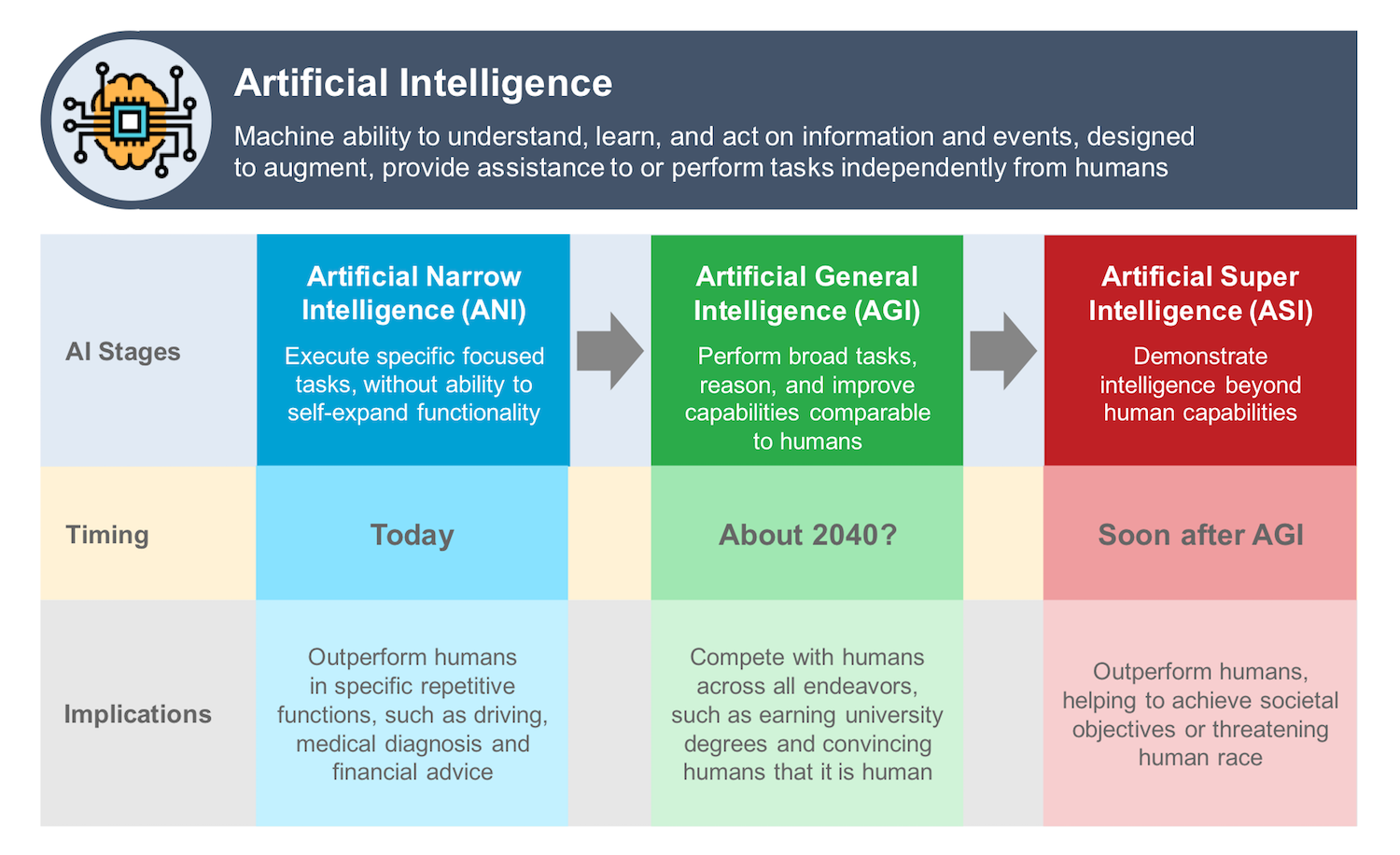
Allison Fine, my co-author for the Networked Nonprofit, and I are actively researching the use of Artificial Intelligence to better understand what nonprofits need to know about artificial intelligence to future proof their programs, marketing, and fundraising strategies?
The field of artificial intelligence has been around since the 1950’s and evolved into many sub-areas and an alphabet soup of technical jargon. Although we are most interested in the human, organizational, and societal impacts surrounding AI, it is important to understand the technology at a high level.
This article is a good primer: “The three Different Types of Artificial Intelligence.” The three types are Narrow AI (focuses on a narrow task); General AI (as capable as a human); Super AI (more capable than a human). Narrow AI possesses a narrow-range of abilities and is currently in use today. For the most part, the other two types are experimental and the subjects of laboratory experiments.
One example of Narrow AI that most of us interact with everyday and where you can see many nonprofit examples is “Conversational AI.” Think Alexa, Facebook Messenger Bots and other Chat Bots, etc. They use machine learning combined with Natural Language Processing (NLP). NLP is programming code that allows computer to “talk” to humans via text or voice.
Let’s look at some examples of Chat Bots and Voice Activated fundraising being used by nonprofits today.
Nonprofit Chat Bots
I’ve been tracking nonprofits design and deploy chat bots for a few years now as the pace of broader adoption of chat bots has accelerated. According to Chat Bot Magazines State of Chat Bots 2019, there is higher and higher adoption rates and use cases, particularly in customer service.
One reason might be because there are many low cost bot authoring platforms, like Chatfuel, that make it easy to implement a very basic and simple bot. This is a great way to create and test a prototype for your nonprofit to see how a chat bot works and understand the work flow. However, to scale it might require a more sophisticated investment using an “Agentive Design,” and custom programming.
This episode of The Nonprofit Innovators Podcast interviewed Direct Relief’s Thomas Tighe about success of Direct Relief’s customer service bot and the process for developing it. They first built an in-house pilot using chat fuel. Then worked with a conversational marketing firm to implement a more sophisticated Chat Bot.
One of the most insightful points made by the CEO, was that developing an effective bot is not about tech skills, your nonprofit has to be a good communicator and listener and be empathetic. Thinking it through requires developing user personas and paths. The process of anticipating questions from audience segments and responses was useful in and of itself.
Also, the chat bot has to be the response to a real problem. In this case, the organization needed to keep up with social media requests during an emergency and subsequently helping people fundraise to help. Starting with ‘let’s create a chat bot,” is the wrong way to approach it. The right way is identify a problem and figure out if the chat bot is the right solution through testing a prototype and scaling it from there.
Voice Assistants As A Fundraising Channel
Smart speakers or voice assistants are becoming more and more a part of everyday life, despite growing privacy issues. According to a survey by NPR and Edison Research conducted in the last week of 2018, the number of households with smart speakers had grown 78 percent from December 2017. The technology paves the way for the emerging channel of “voice activated” giving.The key benefit is convenience because it removes the barrier between the donation and the payment method and is a way to weave giving into everyday life.
Reports on nonprofits that have incorporated smart speakers as a giving channel are few. This past spring, Red Nose Day, incorporated voiced activated giving into its strategy, although it is unclear exactly how many donors made contributions via Alexa compared to other channels.
This summer Communities in Schools is using Alexa to encourage donors to donate a backpack full of school supplies to students in need. The donations are $25 and Amazon will match pledges to the first $200,000. The interesting part of this campaign is how they are thanking donors. When you make a contribution, you’ll hear a special thank you messaged from Shaquille O’Neal, a board member. Amazon has incorporated charitable donations into Alexa for over a year now to a range of charities. Google Assistant also offers a way to make donations via short spoken commands.
Is your nonprofit working on a chat bot or incorporating voice-activated giving as a channel for fundraising?

Leave a Reply